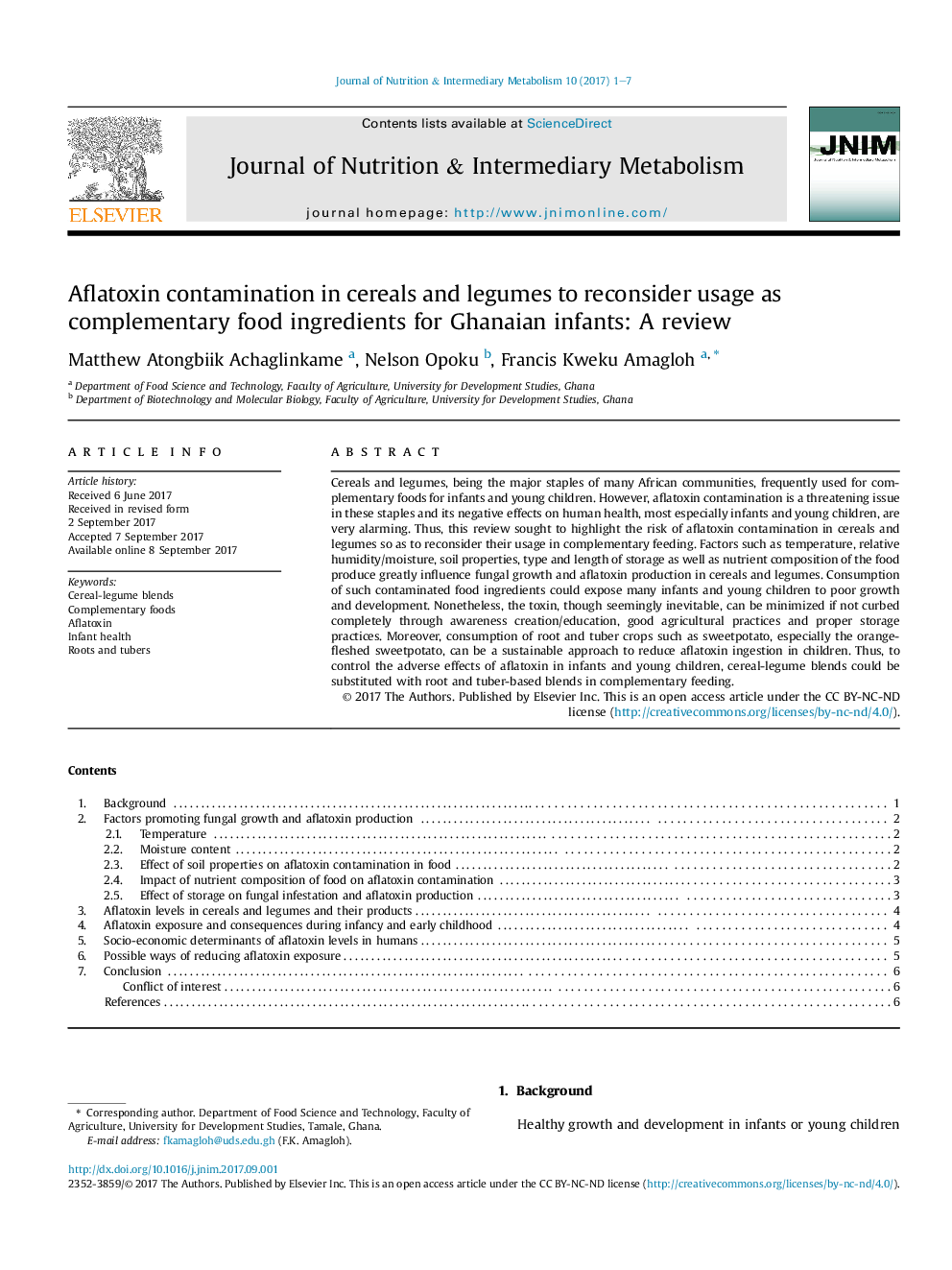| Article ID | Journal | Published Year | Pages | File Type |
|---|---|---|---|---|
| 8589161 | Journal of Nutrition & Intermediary Metabolism | 2017 | 7 Pages |
Abstract
Cereals and legumes, being the major staples of many African communities, frequently used for complementary foods for infants and young children. However, aflatoxin contamination is a threatening issue in these staples and its negative effects on human health, most especially infants and young children, are very alarming. Thus, this review sought to highlight the risk of aflatoxin contamination in cereals and legumes so as to reconsider their usage in complementary feeding. Factors such as temperature, relative humidity/moisture, soil properties, type and length of storage as well as nutrient composition of the food produce greatly influence fungal growth and aflatoxin production in cereals and legumes. Consumption of such contaminated food ingredients could expose many infants and young children to poor growth and development. Nonetheless, the toxin, though seemingly inevitable, can be minimized if not curbed completely through awareness creation/education, good agricultural practices and proper storage practices. Moreover, consumption of root and tuber crops such as sweetpotato, especially the orange-fleshed sweetpotato, can be a sustainable approach to reduce aflatoxin ingestion in children. Thus, to control the adverse effects of aflatoxin in infants and young children, cereal-legume blends could be substituted with root and tuber-based blends in complementary feeding.
Related Topics
Life Sciences
Biochemistry, Genetics and Molecular Biology
Endocrinology
Authors
Matthew Atongbiik Achaglinkame, Nelson Opoku, Francis Kweku Amagloh,
